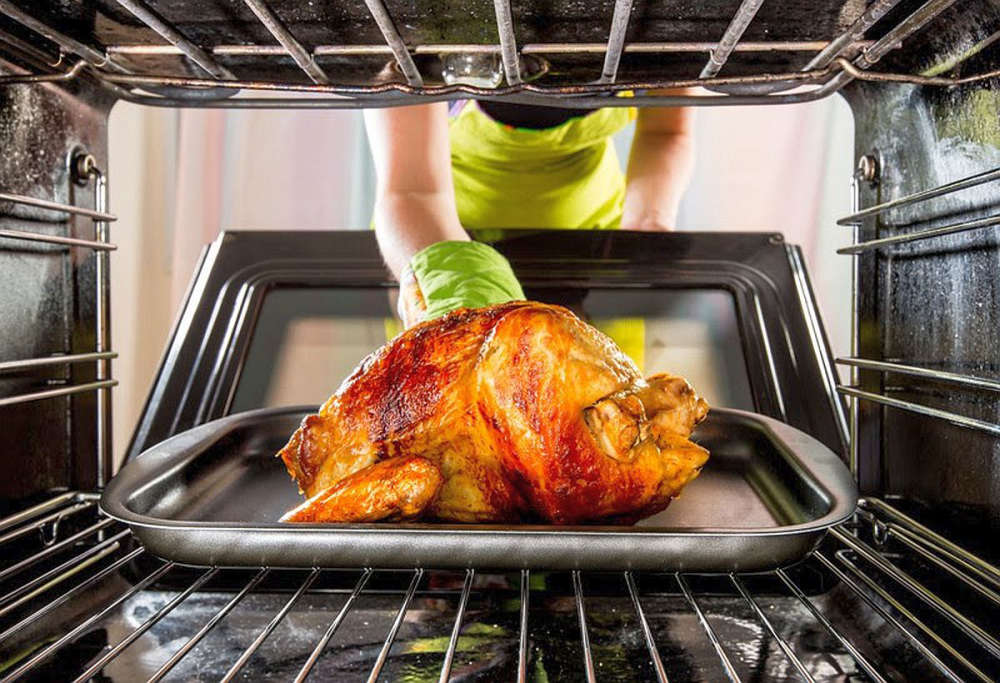
To ensure your Thanksgiving is wholesome without illness, it is important to follow four steps to food safety: clean, separate, cook, and chill, and avoid risky food handling habits that go against USDA guidelines. USDA recognizes eight dangerous habits consumers may fall short of:
#1 Not washing your hands or kitchen surfaces before, during, and after food prep: Handwashing is the first step to avoiding foodborne illness. Wash your hands for at least 20 seconds with soap and water before, during, and after handling food.
#2 Using the same cutting boards and utensils for raw and ready-to-eat foods: Cross-contamination is the spread of bacteria from raw meat and poultry onto ready-to-eat food, surfaces, and utensils. Avoid this by using separate cutting boards — one for raw meat and poultry and another for ready-to-eat foods like fruits and vegetables that will be served raw.
#3 Defrosting your turkey on the kitchen counter: Leaving any frozen package of meat or poultry for more than two hours on the counter at room temperature is dangerous. Even though the center of the package may still be frozen, the outer layer of the food is in the “Danger Zone” between 40 and 140°F — a temperature where foodborne bacteria multiply rapidly.
#4 Consider not washing or rinsing raw turkey: USDA research found that one in four people who wash or rinse poultry cross-contaminate other food items being prepared with germs from the poultry.
#5 Cooking your turkey overnight at a low temperature: It is not safe to cook any meat or poultry in an oven set lower than 325°F. At lower temperatures, meat stays in the Danger Zone for too long. Cook your turkey at 325°F or above and ensure all parts of the turkey reach a safe internal temperature of 165°F.
#6 Relying only on a pop-up temperature indicator: While the pop-up timers found in many turkeys tend to be fairly accurate, they only check the internal temperature in one spot when we recommend three. Always use a food thermometer to ensure your turkey has reached a safe internal temperature of 165 F in the thickest part of the breast, the innermost part of the wing, and the innermost part of the thigh to check its internal temperature.
#7 Stuffing your turkey the night before: USDA recommends against stuffing your turkey since this often leads to bacterial growth.
#8 Keeping leftovers for more than a week: Store leftovers in small shallow containers and put them in the refrigerator. Thanksgiving leftovers are safe to eat for up to four days when stored in the refrigerator. In the freezer, leftovers are safely frozen indefinitely but will keep the best quality for two to six months.


 Dana Festival of Lights right around the corner
Dana Festival of Lights right around the corner
 Governor Braun celebrates "Small Business Saturday" in Indiana
Governor Braun celebrates "Small Business Saturday" in Indiana
 Teen dies in ORV accident
Teen dies in ORV accident
 IDOH offers food preparation tips for a safe Thanksgiving
IDOH offers food preparation tips for a safe Thanksgiving
 O'Heir reflects back on time as Vermillion County EMA Director
O'Heir reflects back on time as Vermillion County EMA Director
 BMV branches closed for Thanksgiving weekend
BMV branches closed for Thanksgiving weekend
 Indiana 211 connects Hoosiers to essential winter and holiday resources statewide
Indiana 211 connects Hoosiers to essential winter and holiday resources statewide
 State Comptroller’s office warns of misleading mailing
State Comptroller’s office warns of misleading mailing
 Grant program offers assistance for historic lodge buildings
Grant program offers assistance for historic lodge buildings
 Indiana launches holiday traffic safety enforcement campaign
Indiana launches holiday traffic safety enforcement campaign
 Federal law enforcement says government shutdown didn't stop their efforts
Federal law enforcement says government shutdown didn't stop their efforts
 Motorcycle rider killed in crash in Attica
Motorcycle rider killed in crash in Attica
 Great American Smokeout highlights resources to help Hoosiers quit tobacco
Great American Smokeout highlights resources to help Hoosiers quit tobacco
 Safety and tasty the theme for a good Thanksgiving
Safety and tasty the theme for a good Thanksgiving
 Tutoring grants now available for Indiana students and families
Tutoring grants now available for Indiana students and families
 Indiana State Police Troopers receive new look Dodge Durango patrol vehicles
Indiana State Police Troopers receive new look Dodge Durango patrol vehicles




